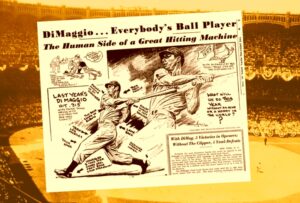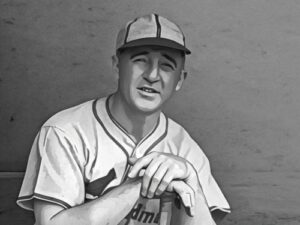
Over the course of his 18 years in the major leagues, Wade Boggs had many successes. That’s why he’s in the Baseball Hall of Fame. The line-drive hitter won five batting titles, made the All-Star team 12 times, and won a World Series title in 1996 with the New York Yankees.
It was with the bat that Boggs made his name and reputation. He was a hitting machine: slashing out singles and doubles mostly, on his way to more than 3,000 hits. His career .328 average is one of the highest for any player in the post World War II era. In 1985 he had his finest season, a year for the ages. That season he found himself in “the zone” – that mystical place where athletes find themselves when everything is going well – for several months.
Boggs’ greatest asset was his knowledge of the strike zone. He, like Ted Williams (who mentored him) refused to swing at bad pitches.
“I didn’t get over 1,300 walks without knowing the strike zone,” Boggs said.
It was that patience that allowed Boggs to lead the league in walks twice, but it also helped him laser-focus in on good pitches to smack around Fenway Park. Pitchers also had a lot of respect for the Boston star, and they pitched around him often – he led the loop in intentional walks six times in a row.
In ’85, Boggs was 27 and coming off a season that saw his average to a very un-Boggs like .325, good for only third in the American League. The Boston third baseman decided to take his disappointment of that finish out on opposing pitchers in 1985. At the All-Star break Boggs was hitting .342, in the midst of a 28-game hitting streak. Long hitting streaks were uncommon for Boggs because he would frequently get 2-3 walks in a game, leaving him with an 0-2. But Boggs was expert at getting on base, especially in ’85. In fact, from May 27 to August 27, Boggs reached base in 80 of 81 games. That’s three months with only one game where he didn’t get on base!
Boggs got hotter as the weather warmed. He hit .376 in June, .388 in July, and .398 in August. In September, the left-hander slumped all the way down to .394. As usual he pounded enemy pitchers in games played at Fenway Park in Boston. That season, Boggs hit .418 at home with an incredible .503 on-base percentage. His efforts helped – the Sox were a .548 team at home and .463 on the road.
Though he hit either leadoff or second in Boston’s order, Boggs was a run producer. With men on base he batted .386 in ’85 and with them in scoring position he hit nearly .400 for the season.
Boggs won the batting title going away, his .368 average was 33 points ahead of the next closest batter, who just happened to be Wade’s hero growing up, George Brett. It was the first of four straight batting crowns for Boggs. He collected a career-high 240 hits and led the league with a .450 OBP.
In many ways, 1985 was the coming out year for Wade Boggs. After he terrorized pitchers so much that season, they pitched him much more carefully. He received more intentional walks and was given a lot of off-speed pitches. Of course, being a great hitter, Boggs made adjustments. He went on to do all the great things he did and take his place with the greats of the game in Cooperstown.






